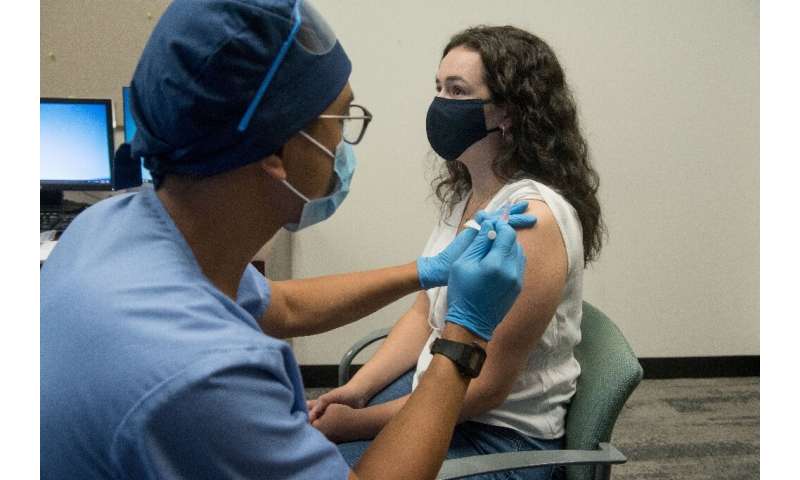Experimental mRNA vaccines come to fore as pandemic rages

The “messenger RNA” technology used by the Pfizer and Moderna Covid-19 jabs works by hacking into the machinery of human cells and turning them into vaccine factories.
This platform has never received approval—but the coronavirus pandemic might be its moment to shine.
All vaccines work by training the body to recognize certain proteins, called “antigens,” that are made by disease-causing viruses or bacteria—thus priming the immune system to mount a response.
Traditional vaccines, like those for measles or the flu, do this by either injecting people with small amounts of the virus, or by giving them weaker “attenuated” forms of the virus.
But according to Drew Weissman, an immunologist at the University of Pennsylvania responsible for a key safety breakthrough in mRNA technology, “those take a lot of time to develop and to optimize.”
It can take scientists months to develop vaccines based on weakened viruses grown inside, for example, chicken eggs.
By contrast, this newer type of vaccine relies on messenger RNA, molecules that play a vital role in human biology, by putting DNA instructions into action and guiding cells on how to make proteins.
The synthetic mRNA in both the Pfizer-BioNTech and Moderna-NIH vaccines carry instructions for a surface protein of SARS-CoV-2, called the “spike protein,” which the virus uses to invade human cells.
The vaccines make human cells grow these proteins so that they resemble the virus—which in turn elicits the production of antibodies that will latch on to the real virus and stop it from doing harm.
With mRNA vaccines, “the only thing you need is the sequence” of the antigen, said Weissman, which can take just a few weeks to find and construct.
The technology was first developed in 1990, but it wasn’t until the mid-2000s that Weissman and Katalin Kariko—now a senior vice president at Germany’s BioNTech—found a way to modify synthetic RNA to prevent it from triggering a dangerous inflammatory response that was killing lab mice.
There are certain important differences between the two vaccines.
Moderna has announced that its vaccine can remain stable at standard refrigerator temperatures of 2-8 degrees Celsius (36-46 degrees Fahrenheit) for 30 days.
It can be kept in long-term storage at standard freezer temperatures of -20 degrees Celsius (-4 degrees Fahrenheit) for up to six months.
Pfizer’s vaccine, on the other hand, needs to be stored in deep-freezer conditions of -70 degrees Celsius (-94 degrees Fahrenheit), which could complicate supply chain logistics, particularly in less developed countries.
On the downside, Moderna’s vaccine has about three times more genetic material per dose than its Pfizer counterpart, according to Zoltan Kis, a research associate at Imperial College’s Future Vaccine Manufacturing Hub. This raises production costs and makes it harder to scale up.
Questions remain
Pfizer has reported 90 percent efficacy and Moderna has reported almost 95 percent efficacy, but important questions still remain to be answered, according to Harvard immunologist Michael Mina.
When the vaccines are first administered, immune cells secrete huge numbers of antibodies, but these are temporary and “all of the efficacy data that we have gotten from the vaccine recipients is generally within just a few months,” he said.
We don’t yet know whether, after around six months, the immune system’s “memory cells” will be activated to make new antibodies if it encounters the virus again.
We also don’t yet have detailed data on how either vaccine works on the elderly, who have weaker immune systems and are the most vulnerable to Covid-19.
And finally, another open question is whether the vaccines stop people who are exposed to the virus from transmitting it to other people, even though they may be themselves protected from the disease.
Source: Read Full Article
